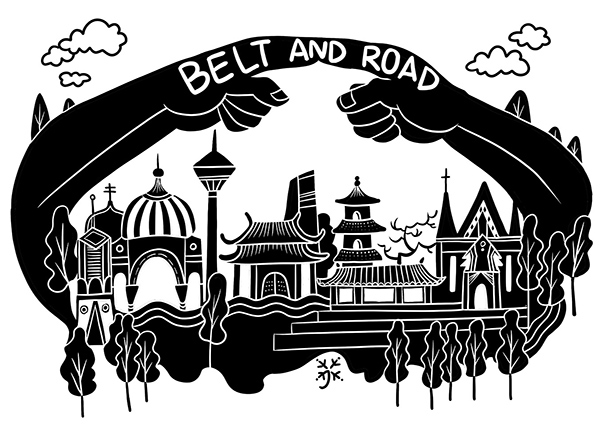
Editor's note: The fourth Meeting of the Heads of Government of China and Central and Eastern European Countries on Nov 24-25 holds a lot of promise. The following are some experts' opinions about how China's Belt and Road Initiative could benefit China and the CEE countries:
Align new Silk Roads with other European countries' plans
The year 2015 marks a defining moment in cooperation between China and Central and Eastern European countries, or "16+1 Cooperation", mainly for two reasons. The first is the Meeting of Heads of the Government of China and CEE Countries is held for the first time in China on Nov 24-25, and the second is the promotion of China's Belt and Road Initiative.
The 16+1 Cooperation ranked very high in China's foreign strategies in the context of the Silk Road Economic Belt and the 21st Century Maritime Silk Road (or Belt and Road Initiative).
CEE countries are located in the western part of the Silk Road Economic Belt, and China's proposal in 2012 to develop a framework of comprehensive mutual relations with these countries effectively signaled the beginning of the 16+1 Cooperation. Since then the 16+1 Cooperation has helped deepen mutual political trust, built cooperation mechanisms and frameworks, and developed practical collaboration among all parties.
China's government and enterprises have explored approaches to cooperation and identified the priority areas. In fact, China is now capitalizing on these experiences by drafting a mid-term "16+1 Cooperation Program". The country is also expected to seek additional opportunities for transnational infrastructure cooperation projects such as the Hungary-Serbia Railway and the extended network of China-Europe Land-Sea Express Line, as well as international industrial cooperation projects in the CEE region.
Compared with some areas in the grip of political and military conflicts along the Belt and Road, the CEE region is relatively peaceful and has stable markets. Still, China faces some challenges in pushing forward the Belt and Road Initiative in the CEE countries, the biggest arguably being how to deepen mutual political trust with the 16 countries and their global stakeholders.
China is trying to align the Belt and Road Initiative with the CEE countries' national development strategies to identify common economic interests, which will strengthen the mutual relations of these countries.
China is also making efforts to align the Belt and Road Initiative with the European Union's infrastructure development strategy, such as the Juncker Plan and the Berlin Plan, by proposing industrial cooperation with the EU in the CEE region. The alignment of the Belt and Road Initiative with the Eurasian Economic Union is aimed at dispelling any doubts Russia may have over China's initiatives, in order to brighten the prospects of China's cooperation with the Balkan states.
Coordination and cooperation in this diverse region is not easy to achieve. However, this challenging endeavor provides China with an opportunity to test and put to use its political wisdom and traditional philosophy of respect, inclusiveness and mutual benefit.
Liu Minru is an associate researcher in Central Compilation & Translation Bureau of the CPC and visiting scholar at the Institute for Security & Development Policy in Sweden.